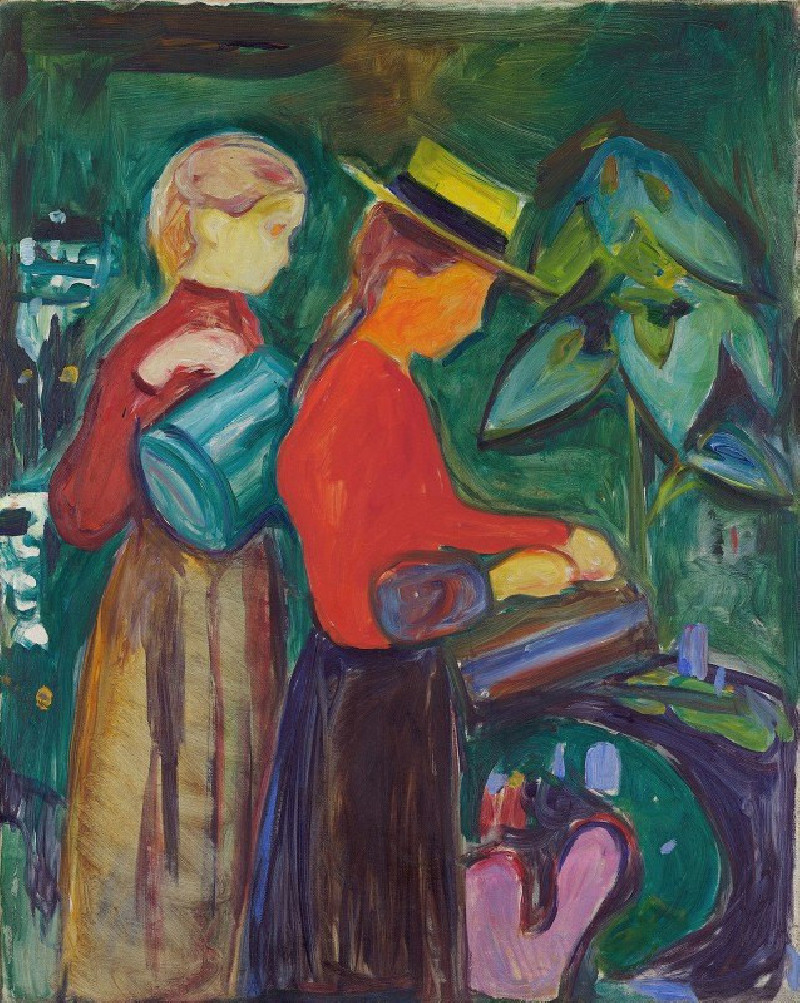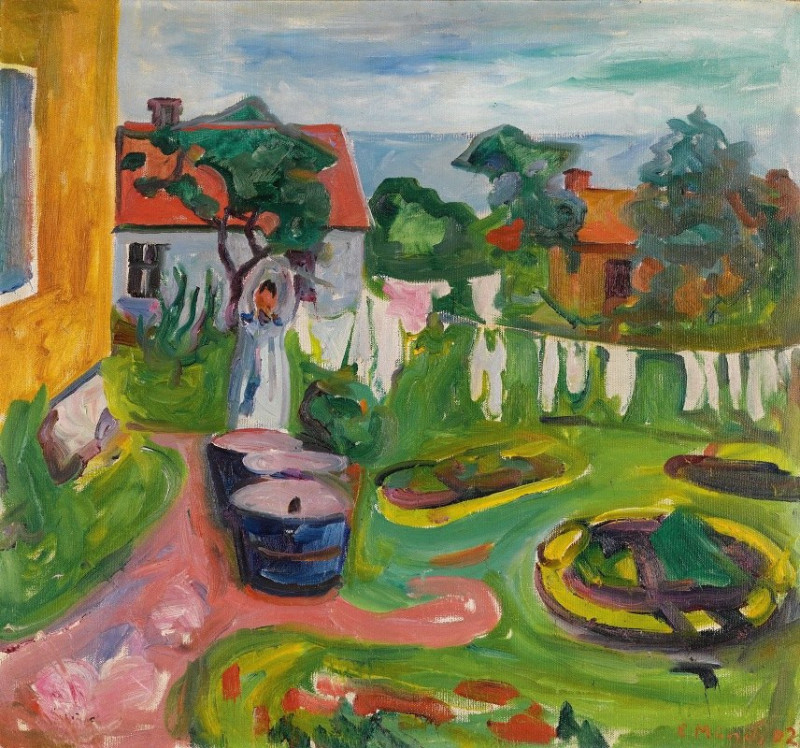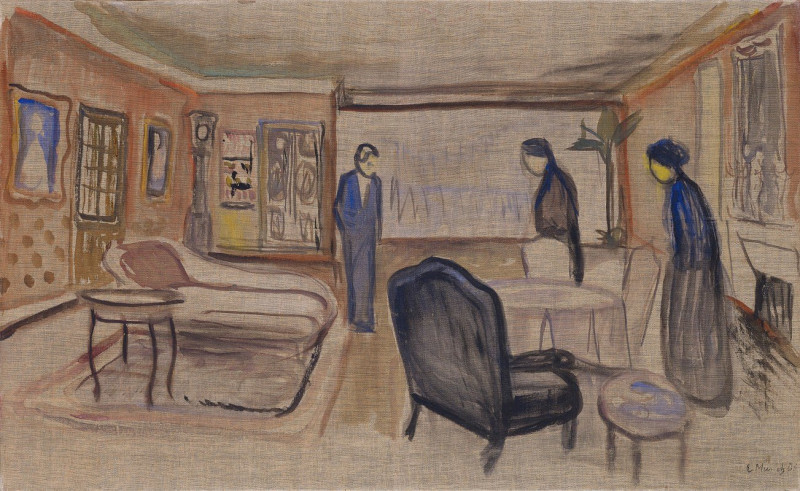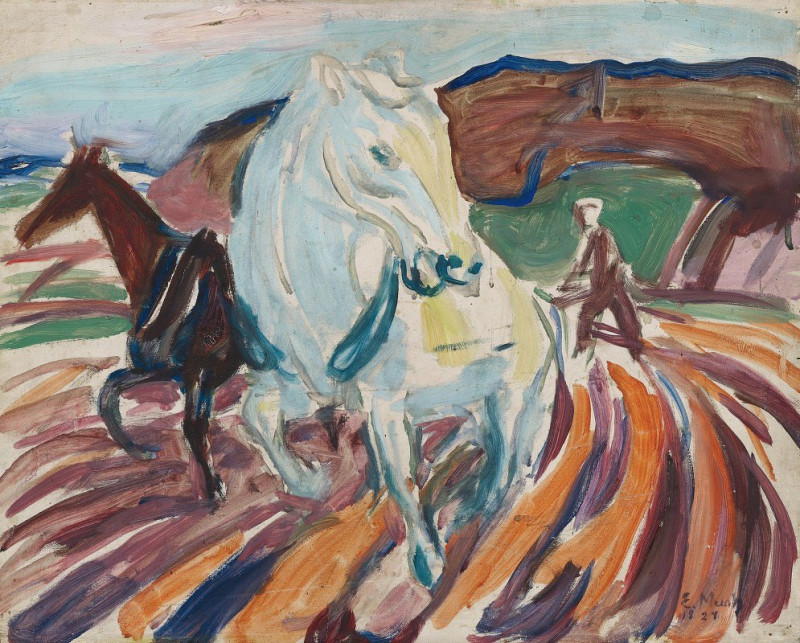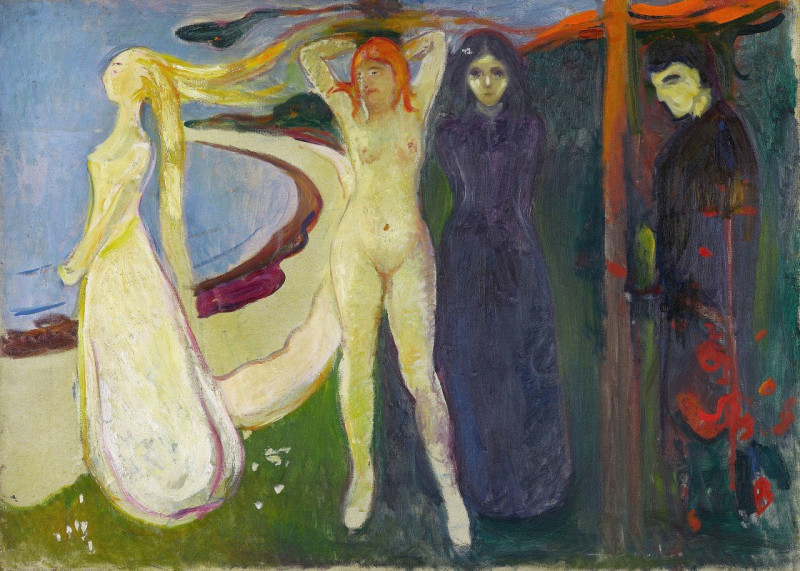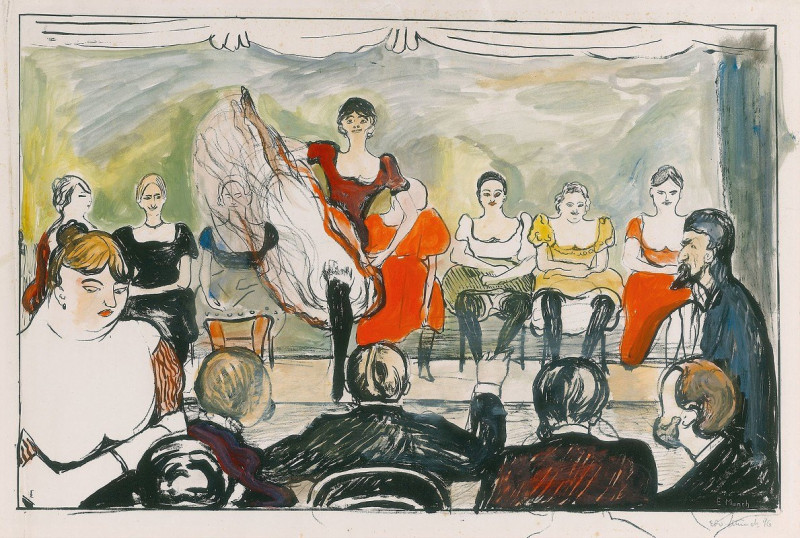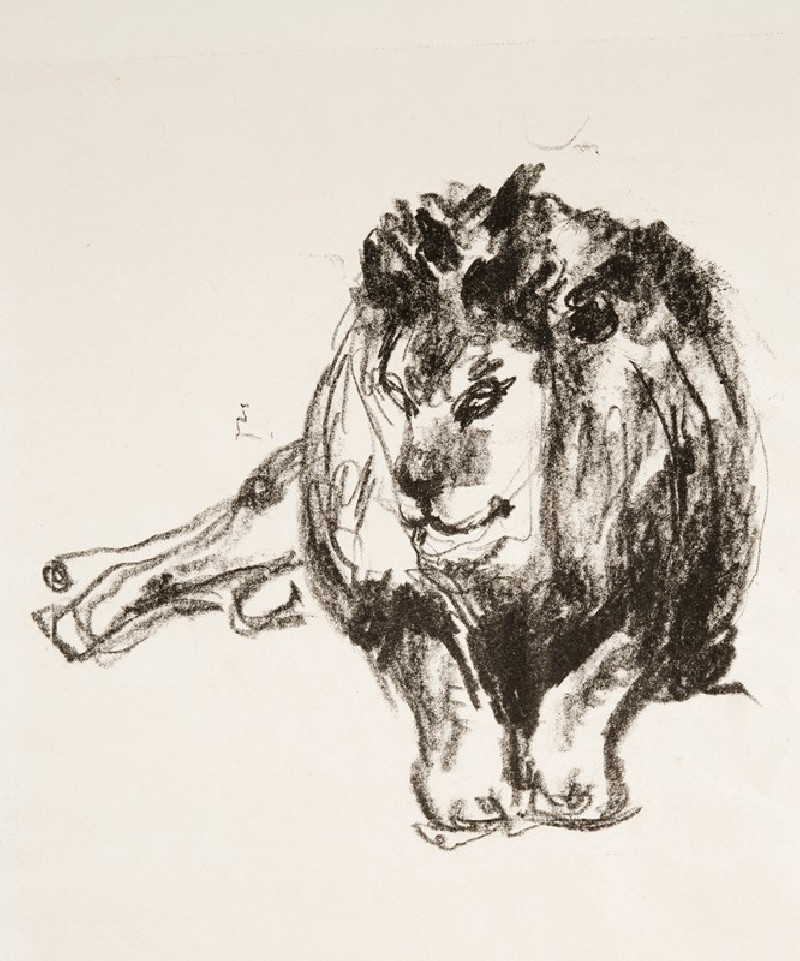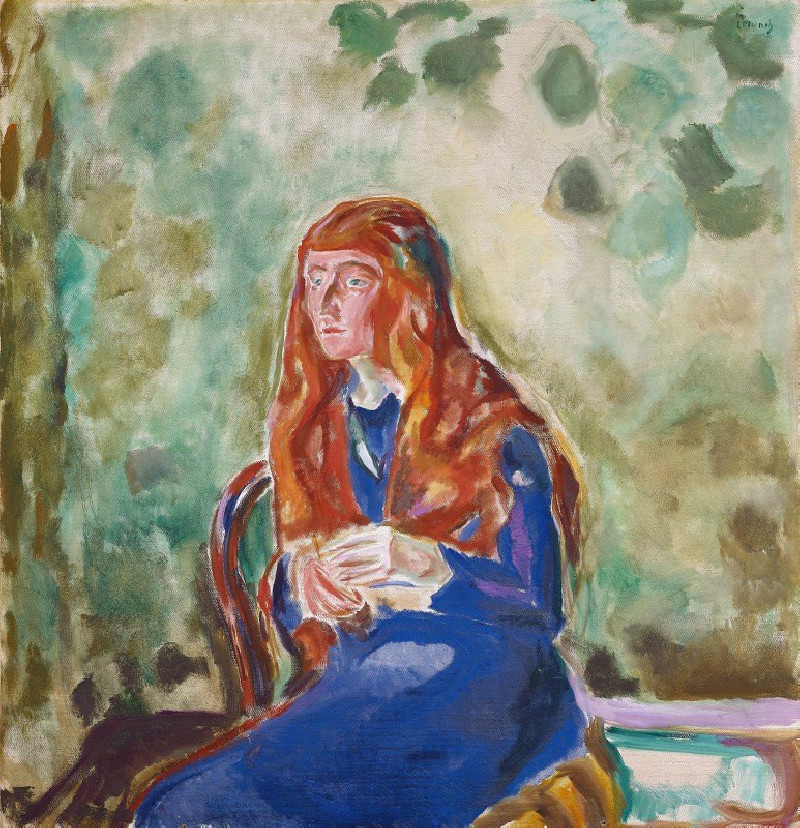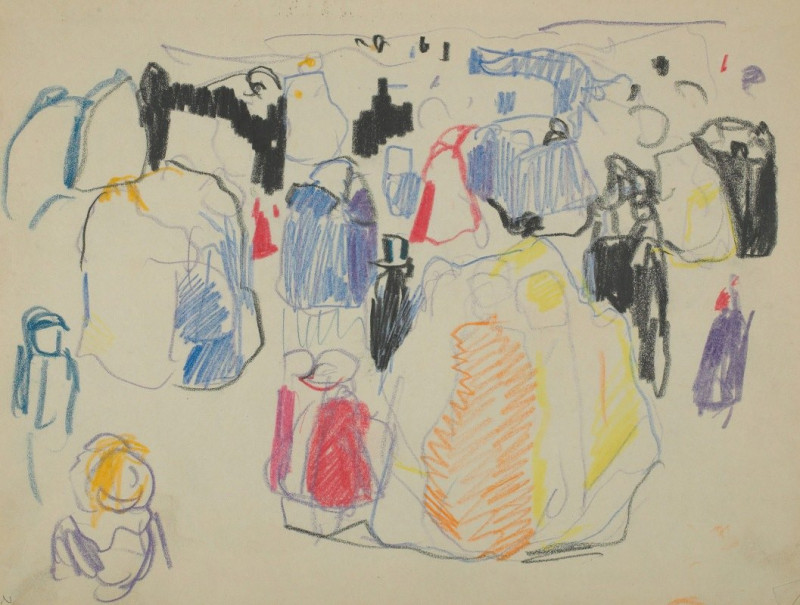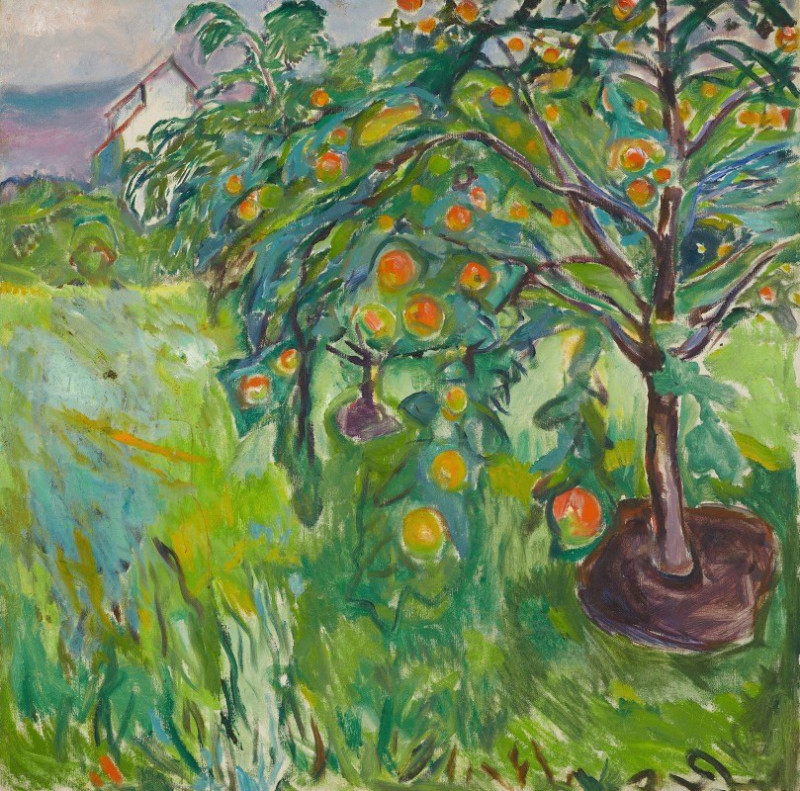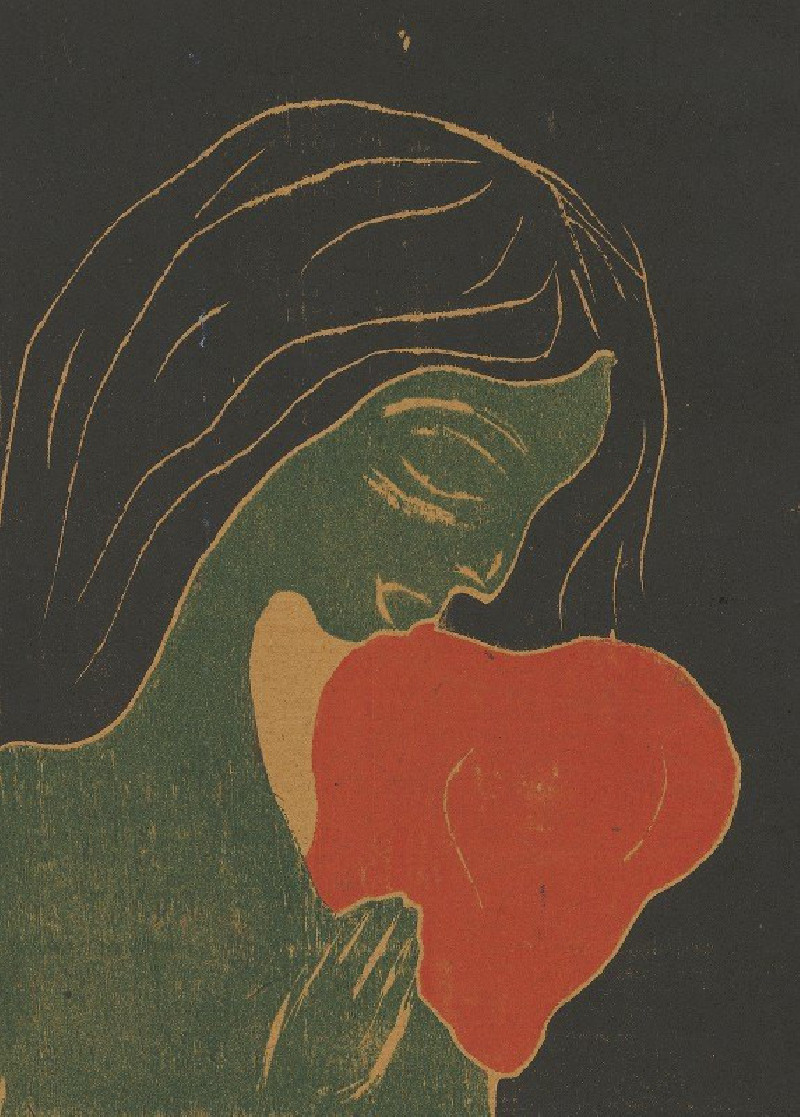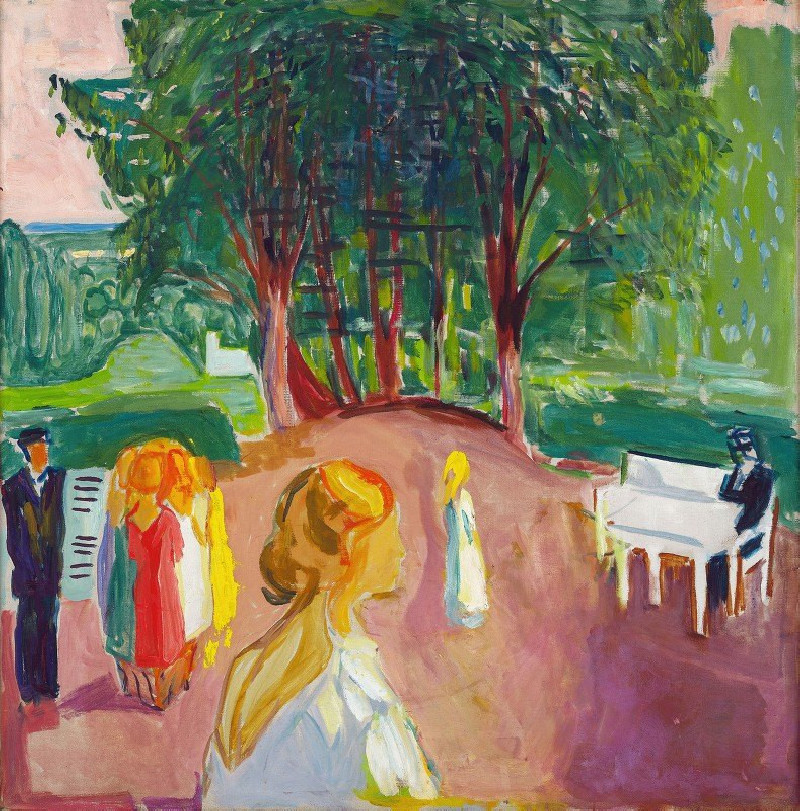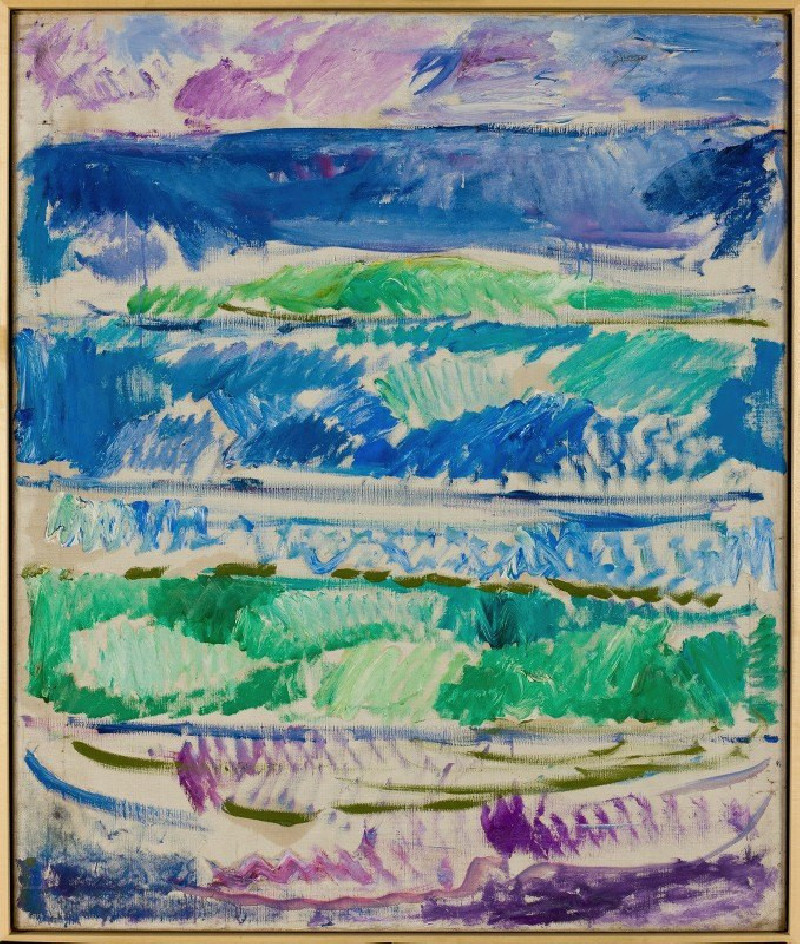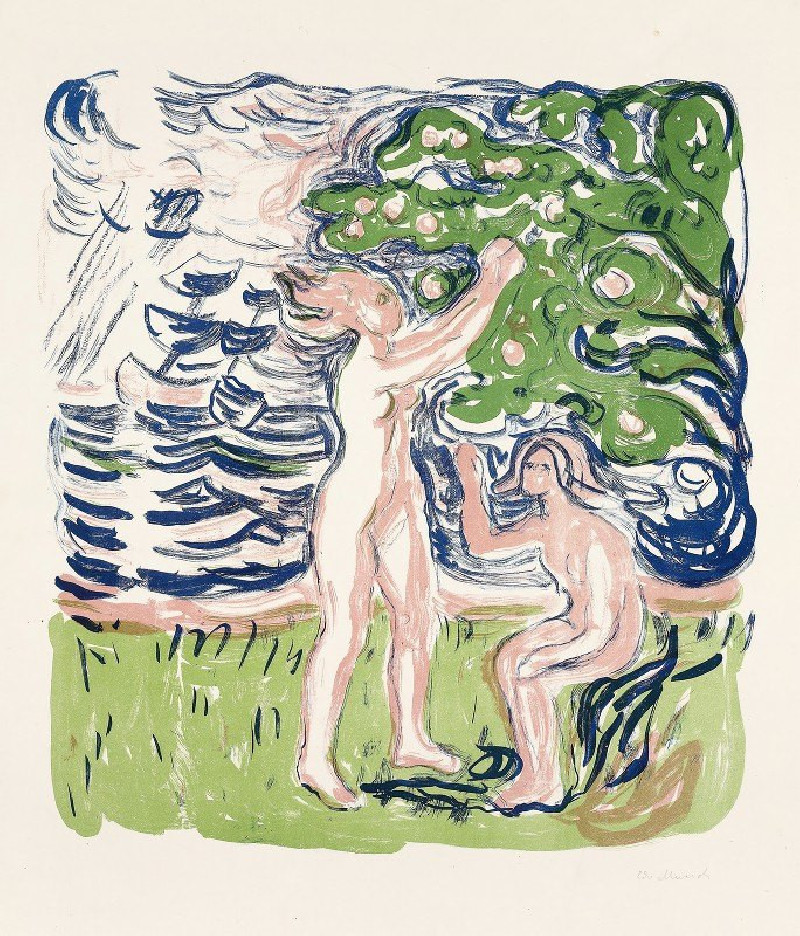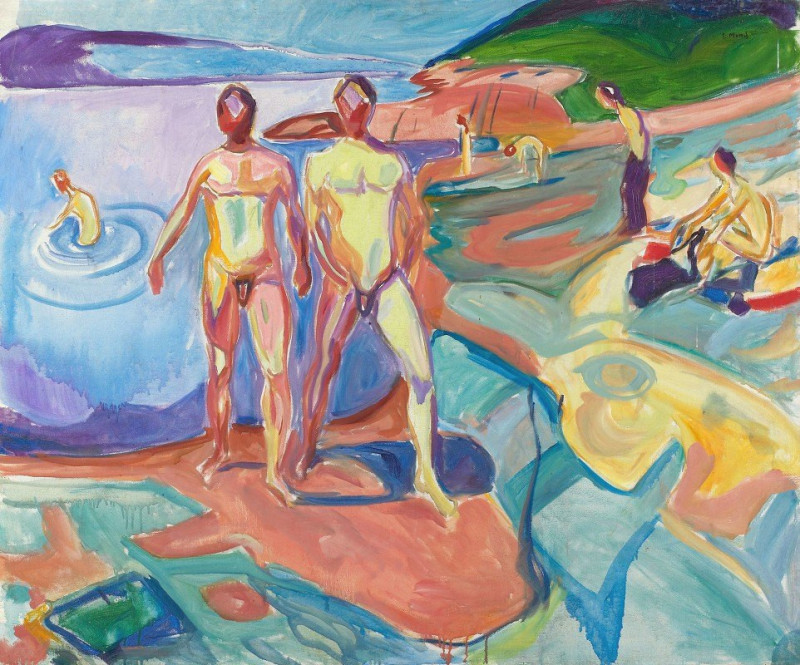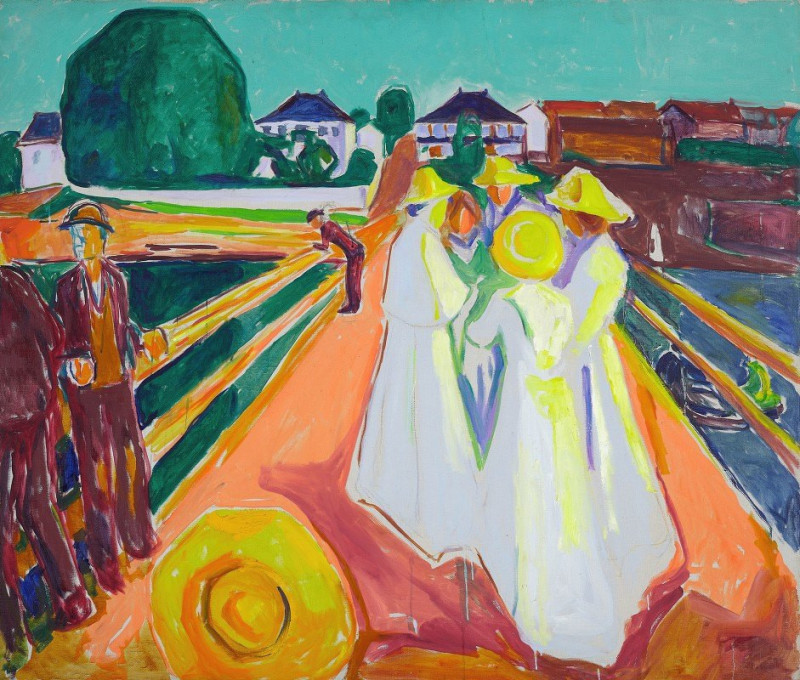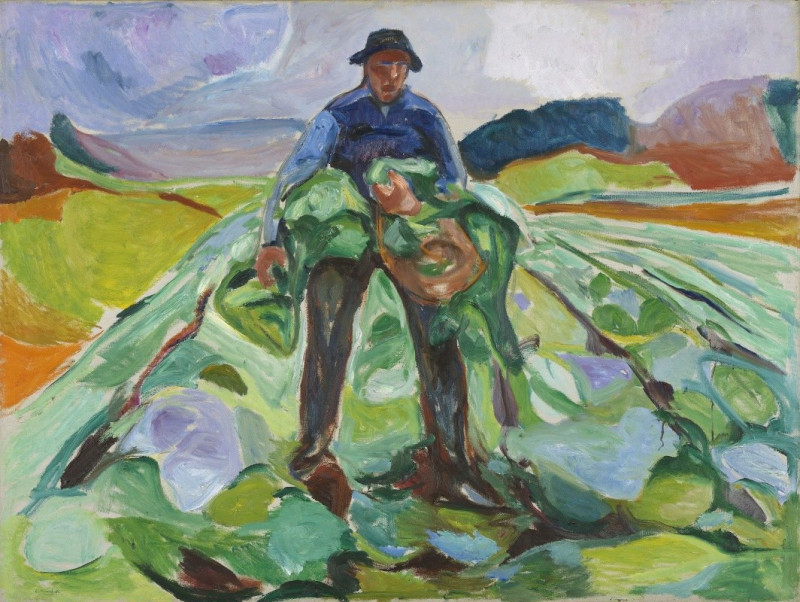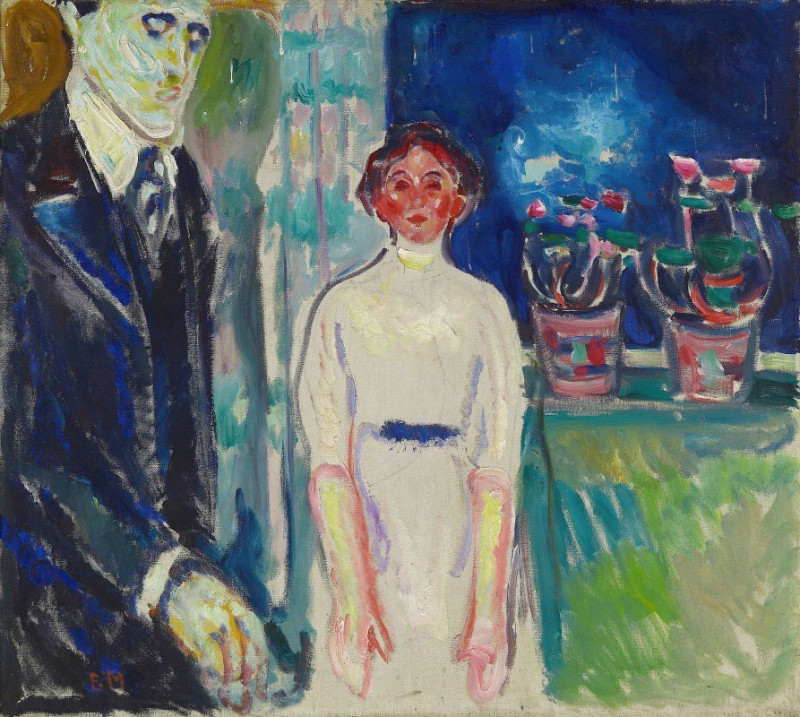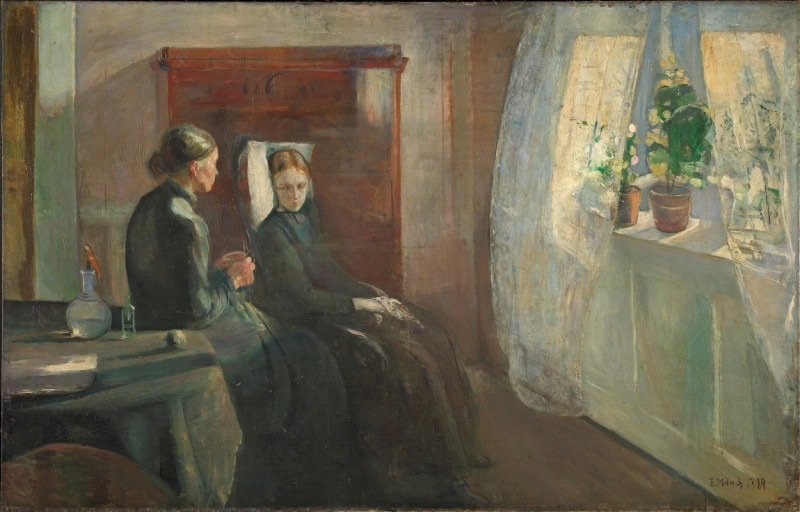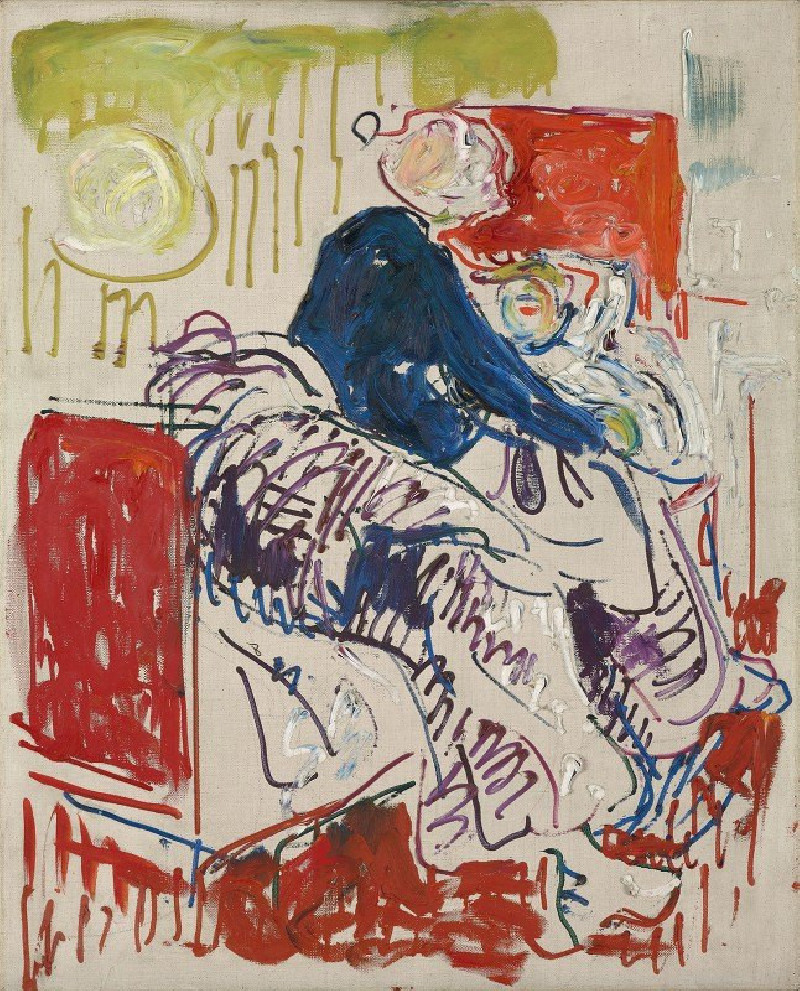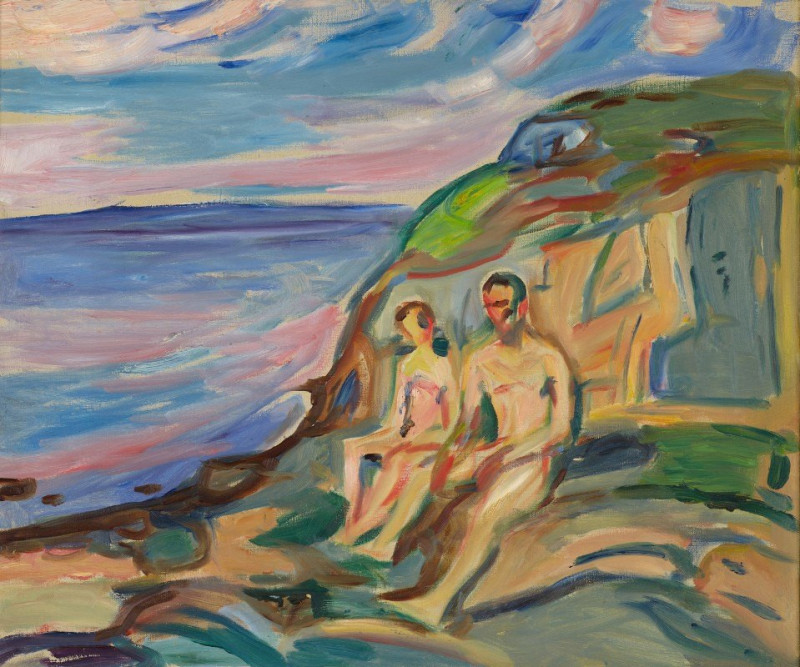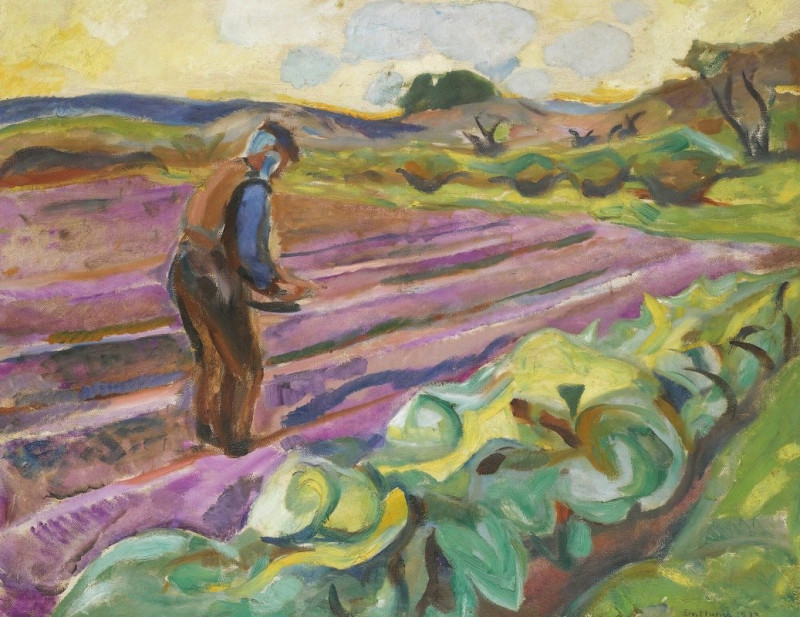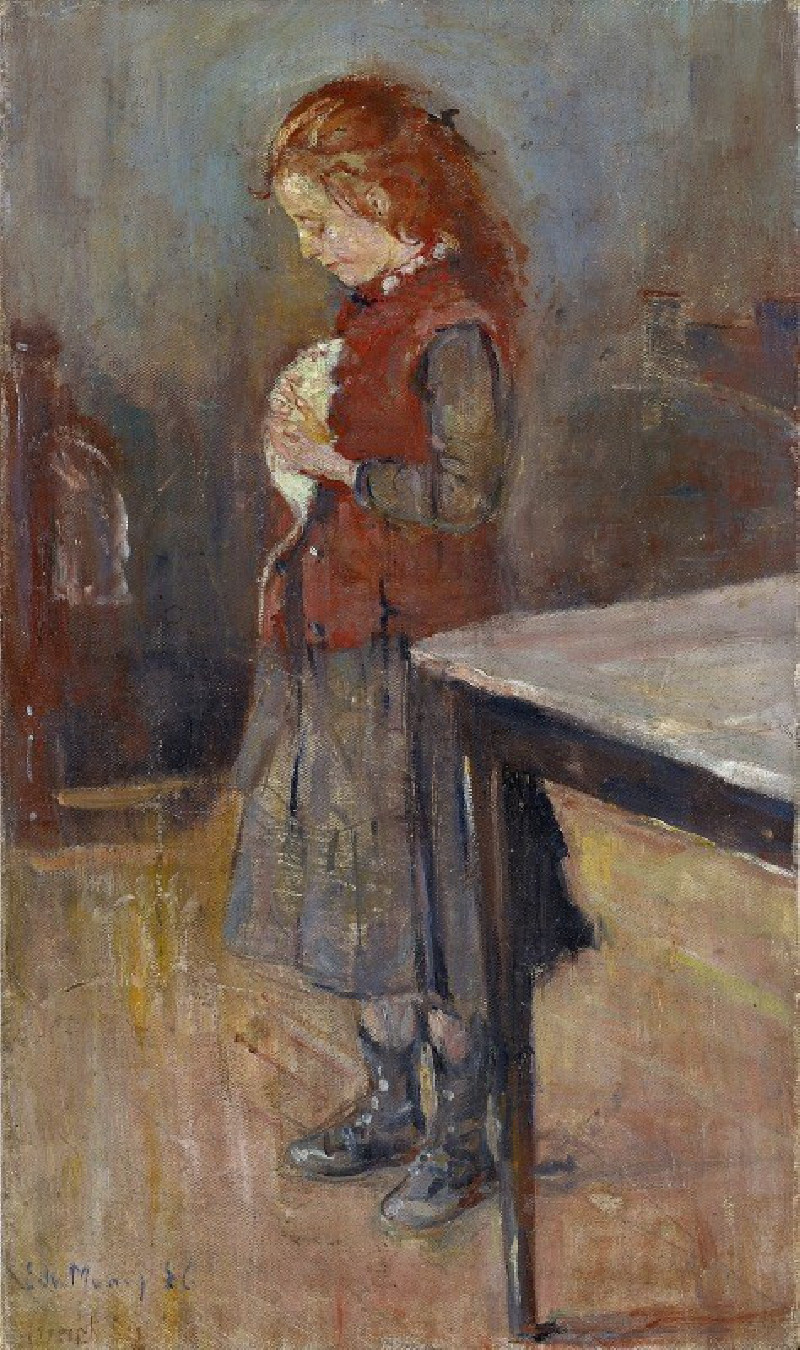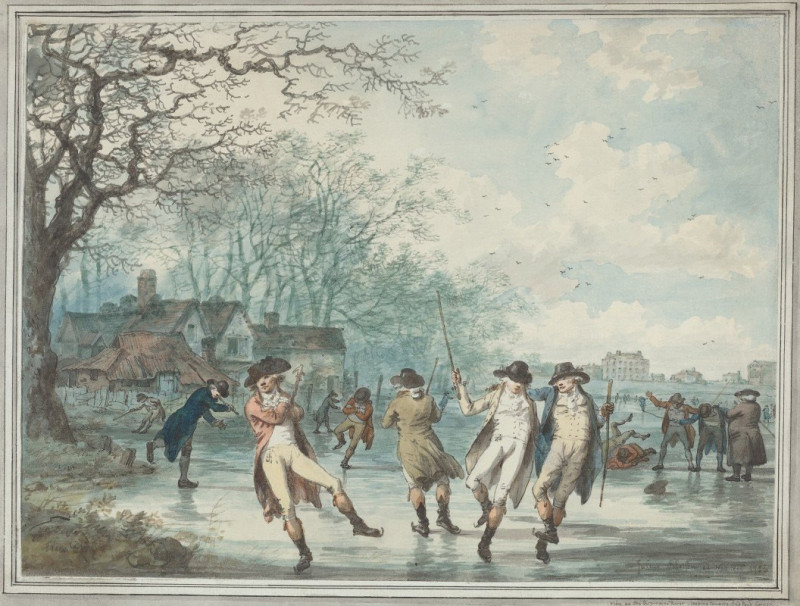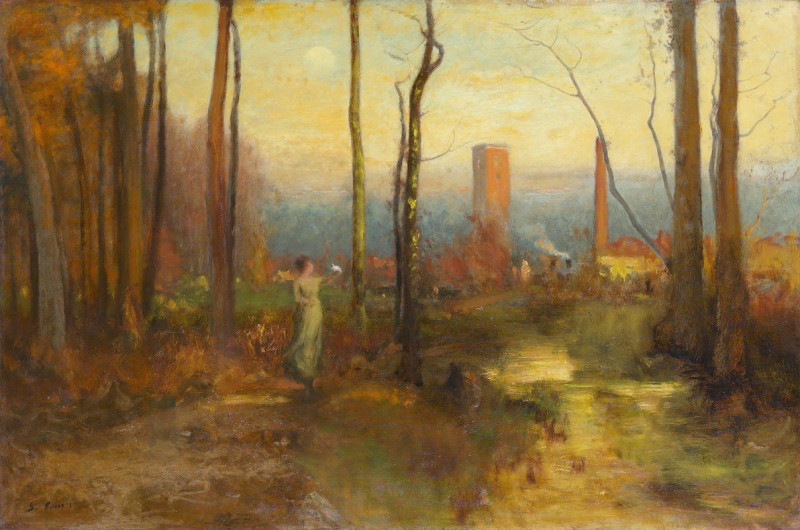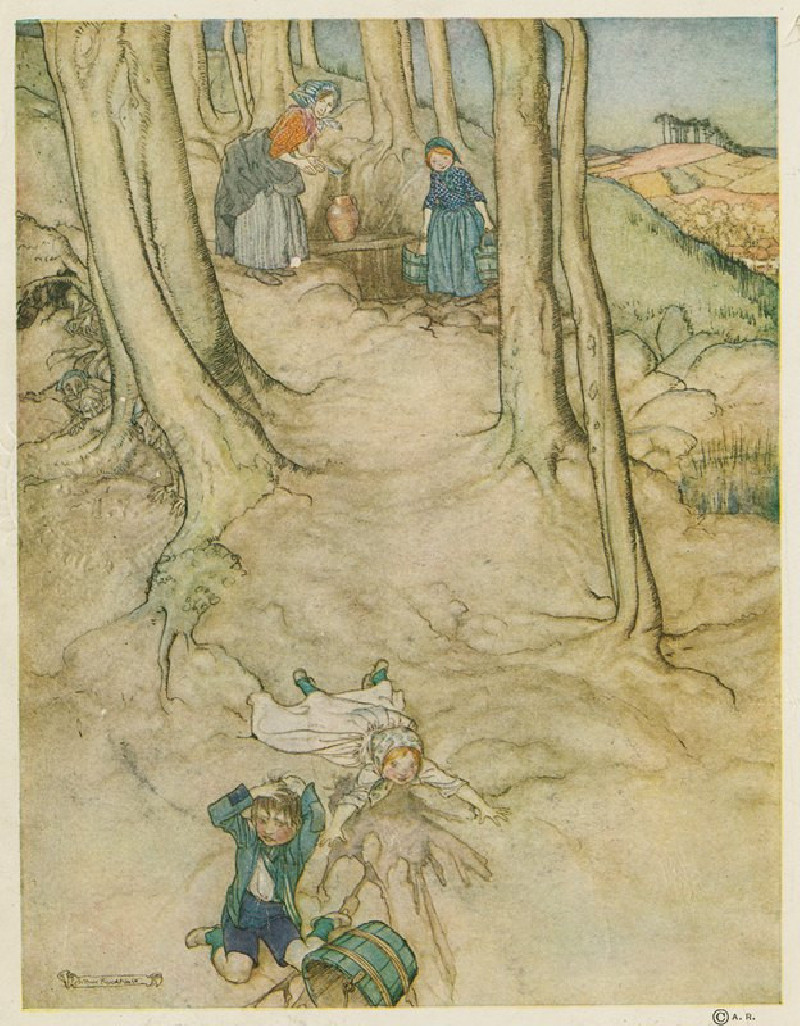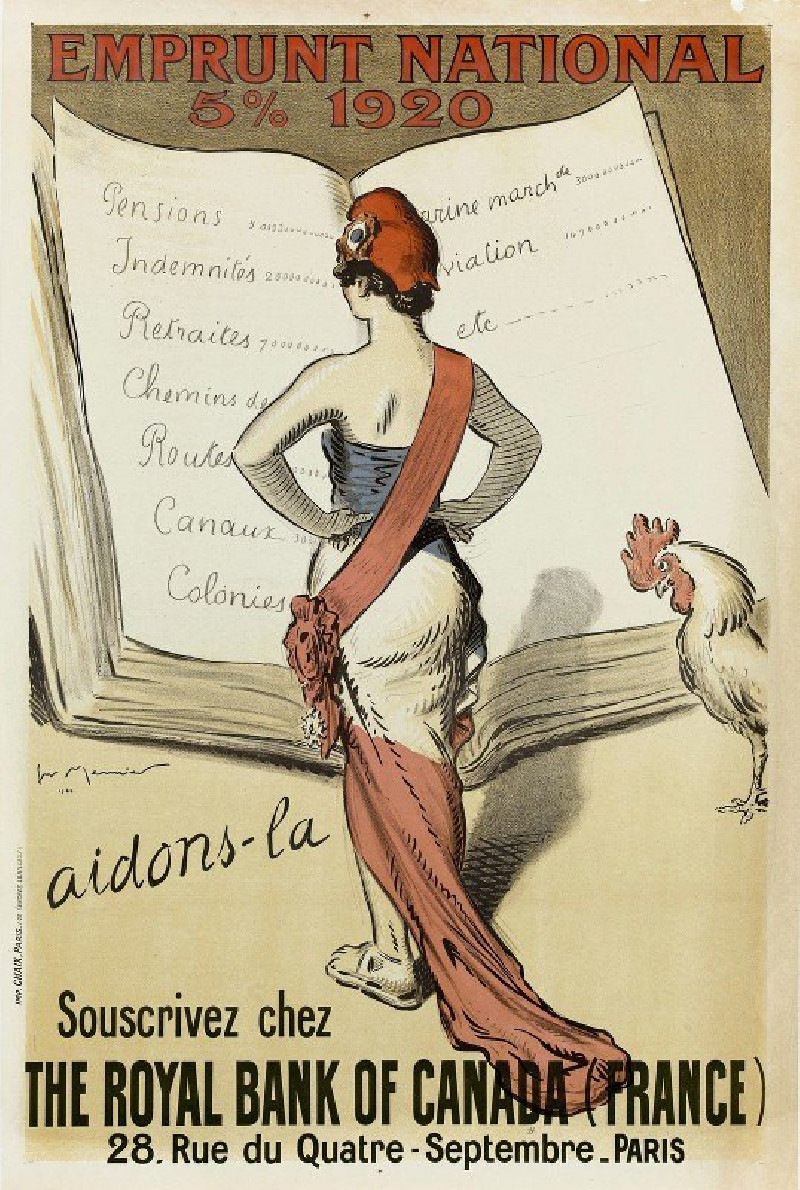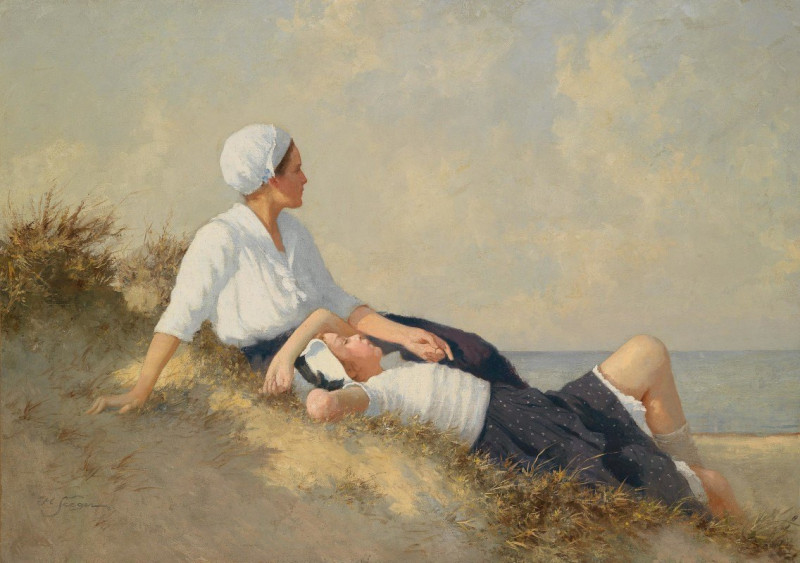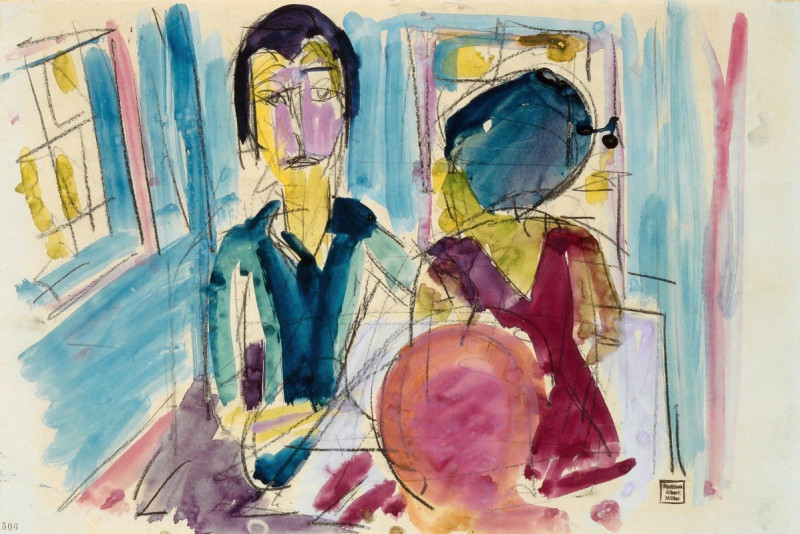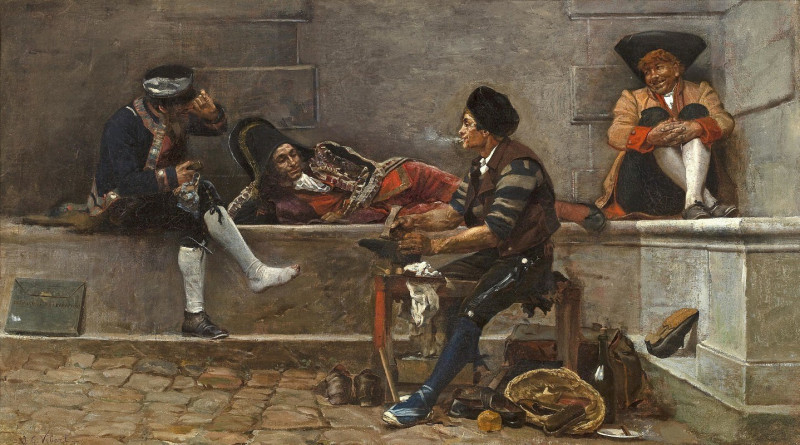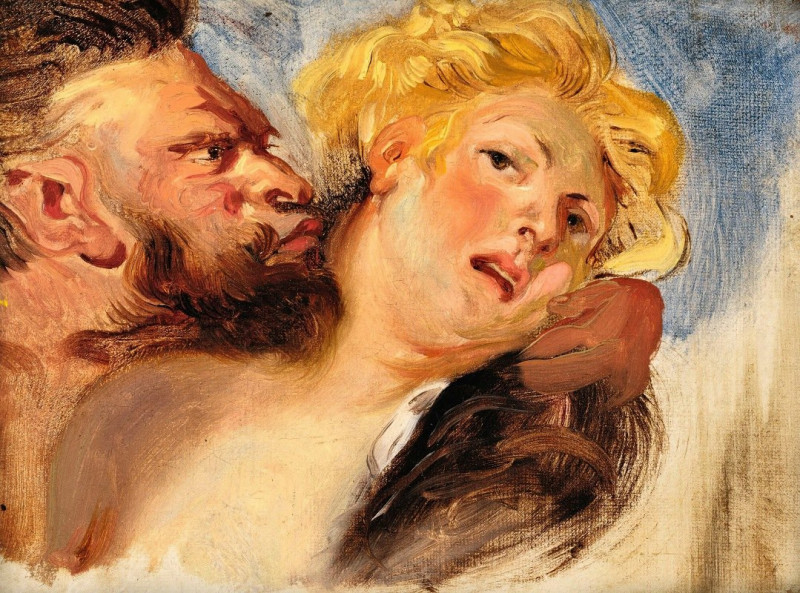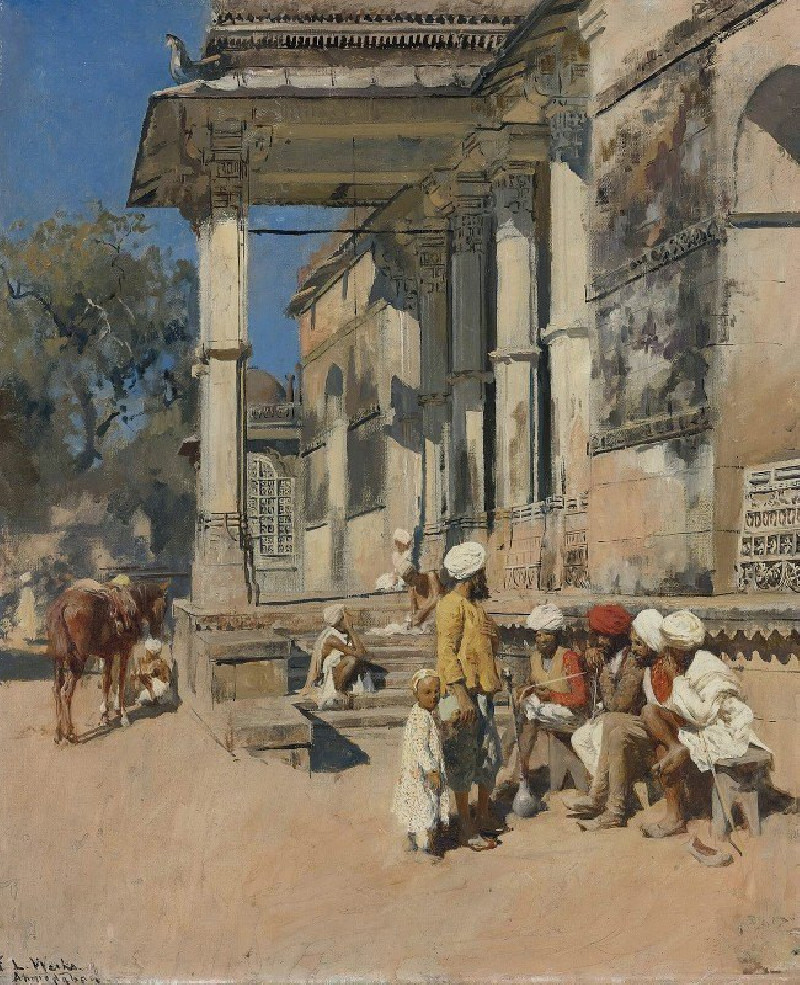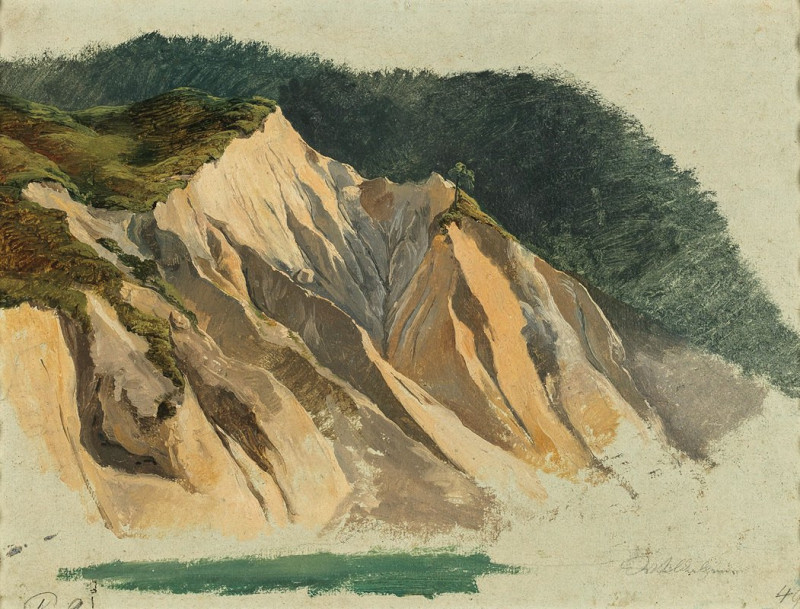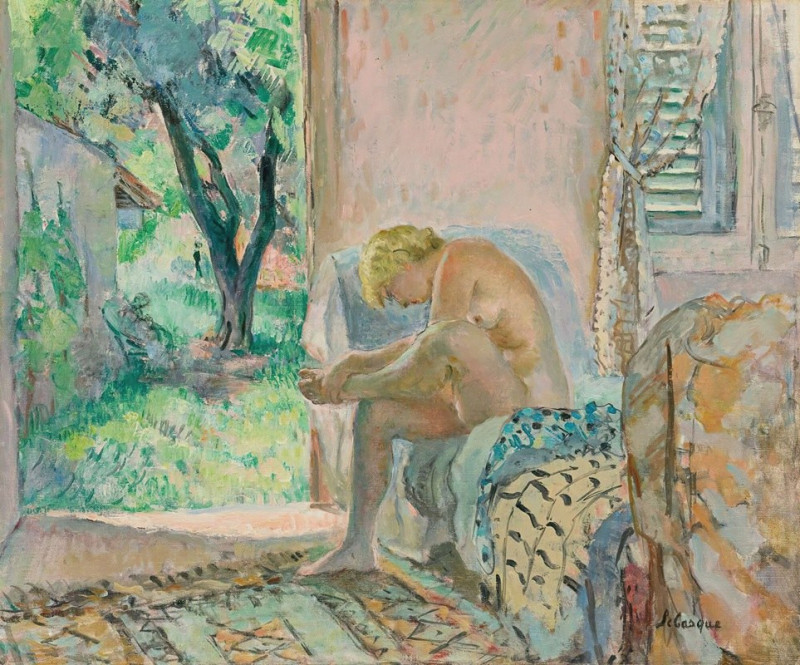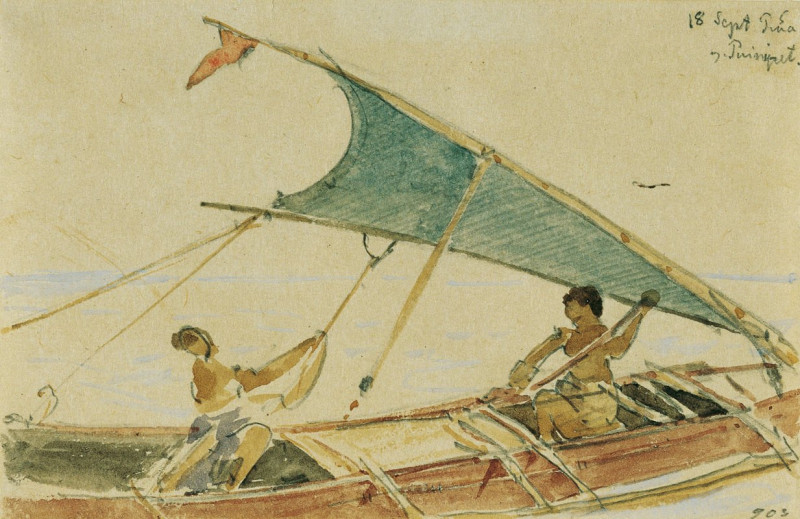Girls watering Flowers (The Linde Frieze) (1904)
Technique: Giclée quality print
Recommended by our customers
More about this artwork
"Girls watering Flowers (The Linde Frieze)" by Edvard Munch, painted in 1904, depicts two figures engaged in the act of watering plants. This painting is characterized by Munch's expressive use of color and loose brushwork, which gives it a vivid, almost dreamlike quality.The painting features two female figures wearing long dresses, one in red and one in yellow. They are both holding watering cans, suggesting the act of nurturing or tending to the garden. The background is lush and green, evoking a dense garden environment that complements the central activity of the figures. The plant life is abstracted and stylized, showcasing broad, fluid shapes and strokes of green with hints of other colors, which could be flowers or other plants.Munch's style here, with its dynamic colors and emotive forms, invites a sense of intimacy and immediacy. There is a closeness not only between the figures themselves but also in their interaction with nature. This work, like much of Munch’s art, might be exploring themes of growth and care, set against a backdrop that speaks to the broader cycles of nature and life.
Delivery
Returns
Edvard Munch (12 December 1863 – 23 January 1944) was a Norwegian painter. His best known work, The Scream (1893), has become one of Western art's most iconic images.
His childhood was overshadowed by illness, bereavement and the dread of inheriting a mental condition that ran in the family. Studying at the Royal School of Art and Design in Kristiania (today's Oslo), Munch began to live a bohemian life under the influence of the nihilist Hans Jæger, who urged him to paint his own emotional and psychological state ('soul painting'); from this emerged his distinctive style.

